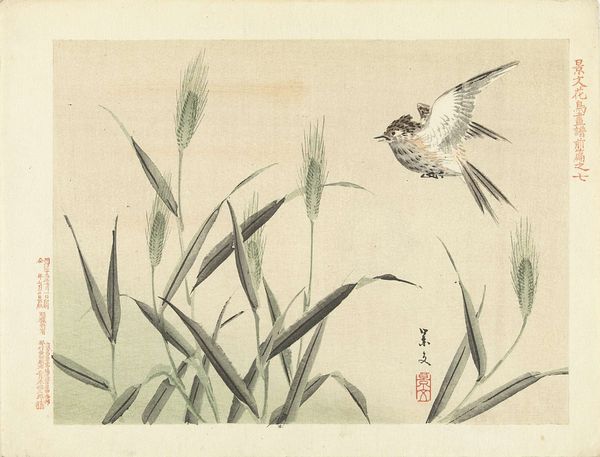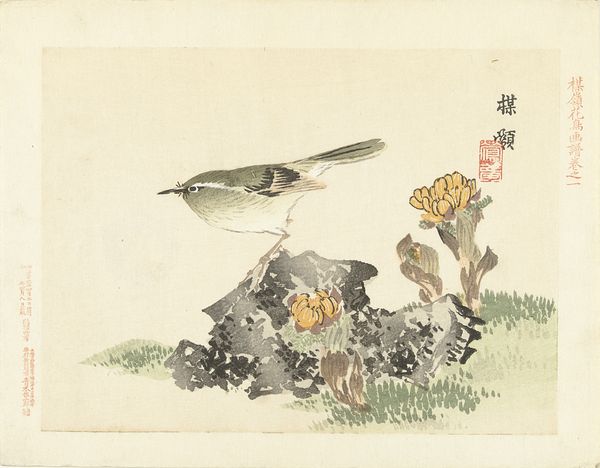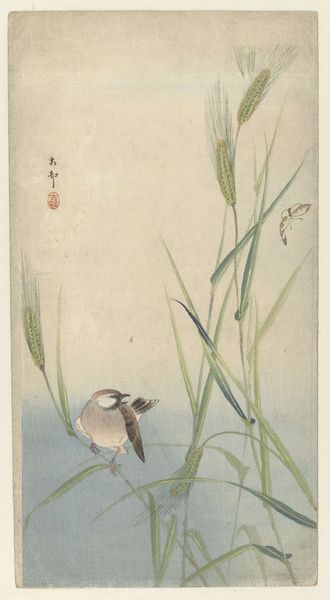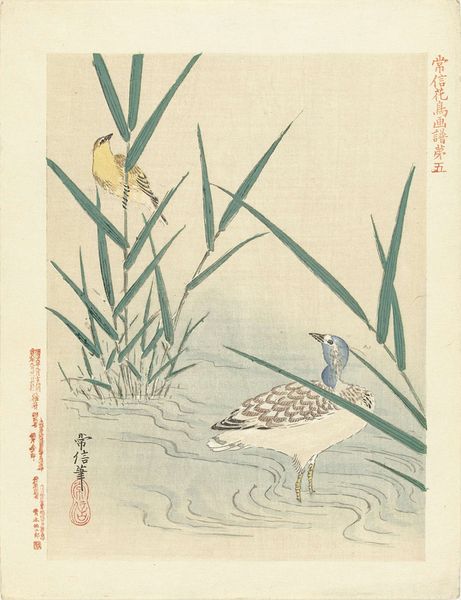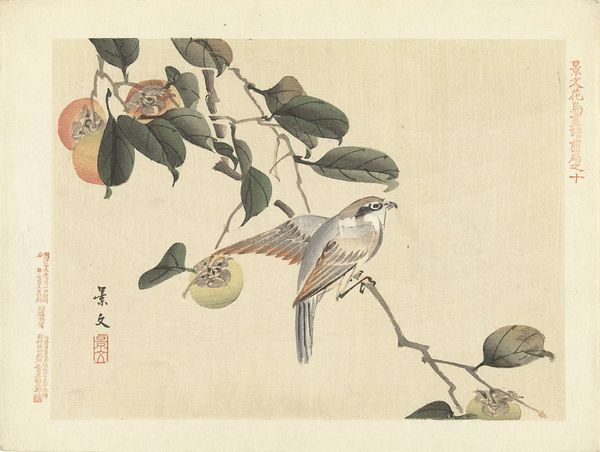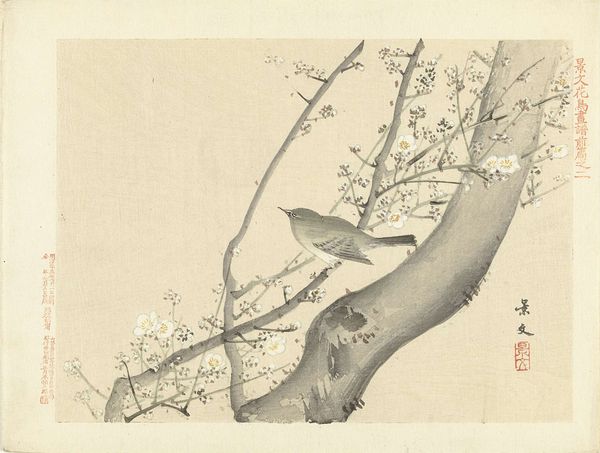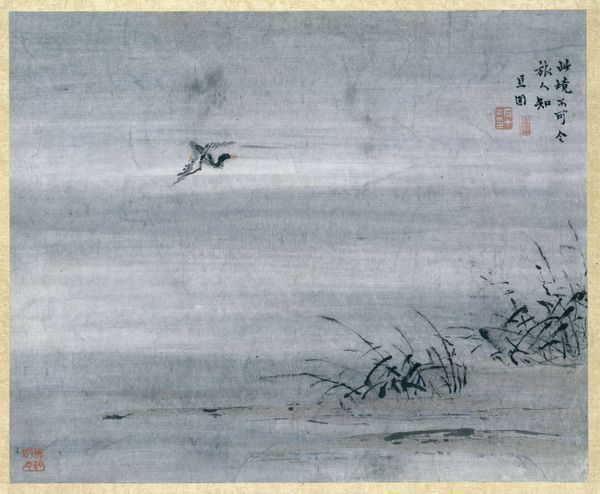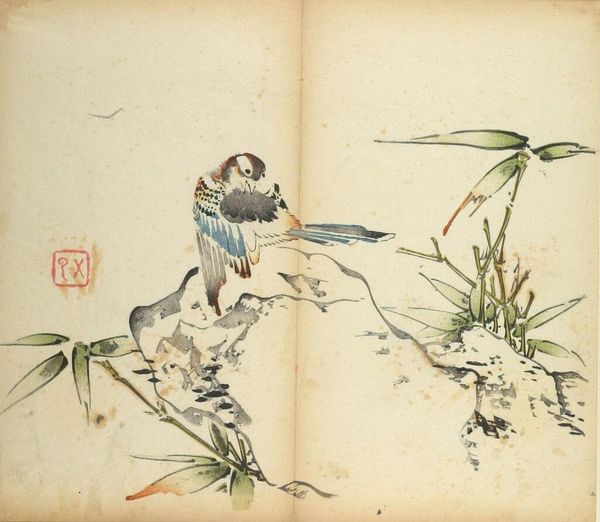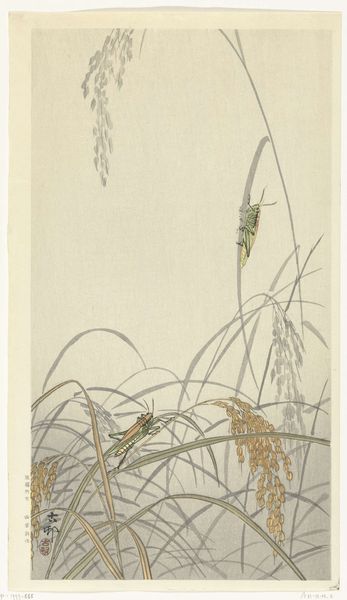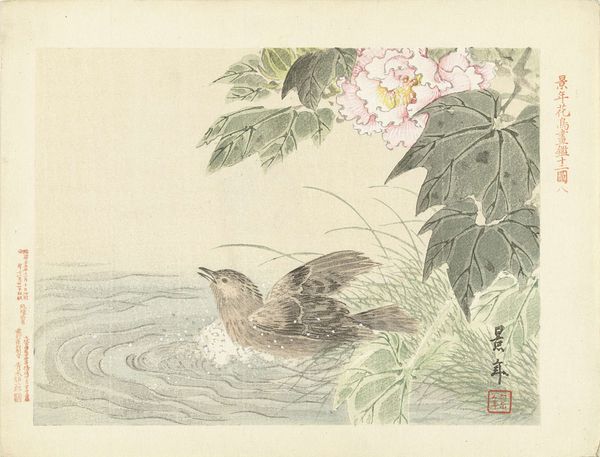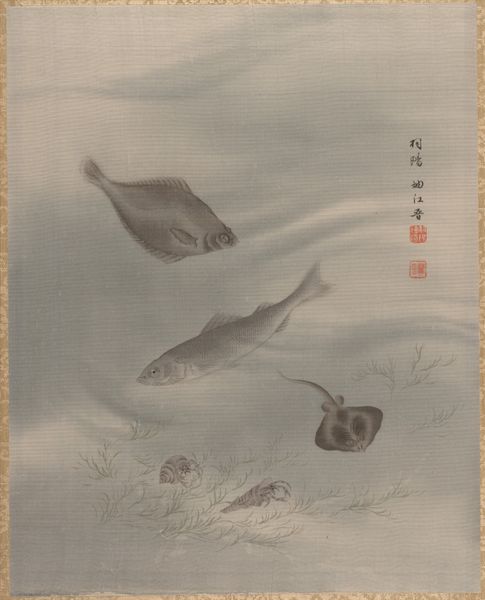
Dimensions: height 208 mm, width 270 mm
Copyright: Rijks Museum: Open Domain
Curator: What a serene scene. This woodblock print, titled "Diving Duck by Reeds," was created in 1892 by Matsumura Keibun. There's a real stillness to it. Editor: Yes, my immediate sense is one of tranquility. The subdued colors, the careful composition…it all points to a quiet observation of the natural world. The craftsmanship alone is remarkable, the way the water reflects light even within the printmaking limitations. Curator: I agree. Keibun was working within the context of ukiyo-e tradition, though his approach certainly pushed its boundaries. His workshop and other such shops likely utilized many artisans specializing in specific areas of design or carving. Editor: The texture is also really interesting. The contrast between the smooth water, rendered by what I assume are meticulously carved blocks, and the feathery texture of the reeds creates such depth. What paper would have been used, and how would that choice contribute to the aesthetic? Curator: That's a good question. Given the period and Keibun's reputation, the print was probably done on handmade paper like Kozo which impacts how the colors are absorbed and presented. The socio-economic status of paper making at the time also contributed to what artwork became popular. Editor: It makes me think about the accessibility of these images, too. Woodblock printing allowed for the mass production of art, bringing landscapes and glimpses of the natural world to a wider audience than ever before. How were prints like these consumed at the time? Curator: They served a variety of purposes: illustrations for books, individual decorative prints like this, even advertisements. The distribution networks became really quite extensive during that era, showing how social values are often impacted through accessible imagery. Editor: This image speaks to a larger story, then, not just one about ducks and reeds but about the entire material and cultural landscape surrounding its creation and consumption. It also captures how something seemingly simple can reflect a sophisticated process. Curator: Absolutely. Reflecting on this work through its materiality and the historical context allows us to look past it being merely pretty. It encourages us to consider it as a manufactured item embedded in society at large.
Comments
No comments
Be the first to comment and join the conversation on the ultimate creative platform.

